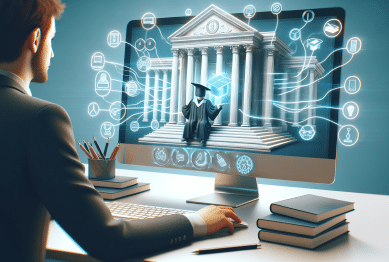Explore how bilingual education reshapes learning, career potential, and society. This guide unpacks the cognitive, academic, and social advantages of mastering more than one language within school systems, offering a fresh look at its impact and the challenges involved.
The Meaning and Scope of Bilingual Education
Bilingual education is more than just learning a second language in school. It is an approach where instructional content is delivered in two (or more) languages, giving students the ability to understand academic subjects in both their native and additional language. This educational framework supports diverse linguistic backgrounds and aims to foster multicultural understanding, often encompassing subjects like math, science, and history alongside language arts. In today’s globalized society, the demand for bilingual programs continues to increase as parents and educators seek new ways to prepare children for a connected world.
The core elements of bilingual education programs vary widely, ranging from transitional models—where the focus is on shifting non-native speakers into the mainstream language—to dual-immersion models where both groups learn together in two languages. These models support not just linguistic flexibility but also cultural competence. According to research, students in well-implemented bilingual environments typically display greater academic engagement and higher retention rates. Many school districts recognize the importance of language access, adapting their curricula to reflect community diversity and changing demographics.
When considering bilingual education’s scope, it’s important to understand it as a bridge between home culture and mainstream society. The approach creates inclusive classrooms where multiple cultures are respected and leveraged as assets. Bilingualism in schools paves the way for lifelong learning habits and the ability to navigate an increasingly multilingual workforce. Studies consistently highlight improved communication skills and adaptability among bilingual graduates, which are key for both personal growth and broader societal cohesion (Source: https://www2.ed.gov/about/offices/list/oela/bilingual-ed.html).
Cognitive and Academic Advantages of Bilingualism
Bilingual education is associated with notable cognitive benefits. Students who master two languages often show enhanced executive function—skills like problem-solving, multitasking, and attention control. Neurological studies reveal that bilingual brains can switch more easily between tasks and filter distractions effectively. This cognitive flexibility supports higher academic achievement, as children are equipped to adapt their thinking to complex challenges. Crucially, early exposure to varied linguistic structures fosters metalinguistic awareness, which supports reading and writing development in both languages.
Academic research highlights consistent gains for students who participate in sustained, high-quality bilingual education. These children frequently score higher on standardized tests and display advanced critical thinking skills compared to monolingual peers. The process of translating ideas across languages deepens comprehension and increases access to rich academic content. This development of language proficiency—both in the primary and the partner language—directly supports academic performance across the board (Source: https://www.ncbi.nlm.nih.gov/pmc/articles/PMC3583091/).
Other academic benefits emerge from bilingual learning environments, such as improved memory and stronger problem-solving strategies. Students become adept at recognizing patterns and making connections, not only in language but across scientific and mathematical subjects as well. These cumulative advantages can translate to better school performance, higher graduation rates, and increased college readiness. Many families consider these outcomes when exploring bilingual options in public and charter schools, making the program’s structure and teacher qualification key selection factors for success.
Career Potential and Long-Term Opportunities
Mastering more than one language in school can open doors in the global job market. Employers across sectors increasingly seek candidates fluent in multiple languages, as these employees can bridge communication with diverse clients, colleagues, and communities. A bilingual background is a notable asset in international business, diplomacy, healthcare, education, and beyond. This flexibility and cross-cultural competency contribute to broader professional pathways and opportunities for advancement (Source: https://www.actfl.org/center-language-education-and-research/benefits-language-learning).
The benefits extend into higher education, where bilingual students often have a competitive edge in scholarship selection and study-abroad placements. Their language skills facilitate research, collaborations, and a deeper understanding of global issues. Some universities offer preferred admission or advanced placement credits to graduates of dual-language programs. Over time, these advantages can significantly influence earning potential as multilingual professionals earn more on average compared to monolingual peers in many industries.
The adaptability fostered by bilingual education prepares students for evolving professional landscapes. As technology, migration, and international partnerships change the nature of work, workforce preparedness requires flexible communication and the ability to interact comfortably across cultures. Bilingual education helps develop exactly these capacities, enabling individuals to thrive and actively participate in local and international networks. This lasting effect is often cited as one of the strongest arguments for expanding bilingual options in public education.
Bilingualism and Social Integration
Bilingual education isn’t just about academic or career outcomes; it also has profound effects on social inclusion and community building. Students in these programs engage with peers from a variety of backgrounds, leading to greater empathy and reduced bias. School-based bilingualism encourages appreciation of different traditions, fostering respect and cooperation among classmates. This inclusive approach helps break down linguistic or cultural barriers that might otherwise limit social mobility or civic participation.
Participation in bilingual education is often linked to higher self-esteem and a stronger sense of identity—especially among children from immigrant families. The ability to navigate both the dominant and home culture gives students confidence and a sense of belonging. When schools value and maintain heritage languages, they strengthen connections between generations and create bridges between communities. These outcomes benefit society as a whole, nurturing future leaders who appreciate diversity and pluralism (Source: https://www.unesco.org/en/articles/importance-multilingual-education).
Beyond the classroom, bilingualism serves as a tool for community engagement. Bilingual individuals are more likely to participate in civic, volunteer, or advocacy work—often serving as language brokers in healthcare, legal, or educational settings. Their unique perspectives help address language equity issues and support more effective policy-making. Teachers, principals, and community leaders increasingly look to bilingualism as a path to meaningful integration and societal resilience.
Common Challenges and Controversies
Despite its clear benefits, bilingual education faces persistent challenges. Some debates focus on resource allocation, as implementing effective programs requires skilled teachers, specialized materials, and adequate funding. There are also concerns about balancing native language maintenance with the pressures to achieve proficiency in the dominant language. Families may worry about potential academic delays or identity confusion, but research shows these risks can be mitigated with thoughtful curriculum design and community support.
Policy differences also shape the experience of bilingual education. In regions where monolingualism is prioritized, students may miss out on bilingual opportunities. National or state debates sometimes question whether these programs slow language integration or cost too much. However, evidence points to the long-term social and economic gains from sustained bilingual investment—particularly for English learners who, without support, might struggle to keep pace academically (Source: https://www.rand.org/pubs/research_reports/RR1693.html).
Despite periodic controversy, bilingual education remains a dynamic and evolving field. Advocates continue to push for inclusive policy, ongoing teacher training, and culturally responsive instruction to address inequities. Parents play a vital role, partnering with schools and monitoring holistic progress. Understanding and addressing these challenges ensures that the benefits of bilingualism reach all students, regardless of background or starting point.
Trends and Innovations in Bilingual Programs
Modern bilingual education is evolving rapidly, with new models leveraging technology, community partnerships, and interdisciplinary approaches. Some schools introduce dual-language instruction as early as preschool; others use digital platforms to connect students with language mentors worldwide. These innovations allow for personalized learning experiences and create new opportunities for both language preservation and practical communication. Schools often tailor curricula to reflect local community languages, focusing on relevance and real-world application.
Professional development for teachers is a cornerstone of effective programs. Educators increasingly draw on research-based strategies—such as sheltered instruction and scaffolding—to support learners at every proficiency level. Parent and caregiver engagement is also prioritized. Bilingual schools frequently organize language classes, cultural events, and resources for families. This collaborative approach builds supportive networks that extend benefits beyond the classroom walls (Source: https://www.cal.org/delap).
The future of bilingual education appears promising. More policy makers, educators, and employers recognize its role in creating resilient, adaptable societies. As evidence grows, interest in dual-language immersion, multicultural curriculum, and inclusive pedagogy increases. These trends point to a new era in education—one where language diversity is understood as a strength, shaping both individual growth and collective progress.
References
1. U.S. Department of Education. (n.d.). Office of English Language Acquisition: Bilingual Education. Retrieved from https://www2.ed.gov/about/offices/list/oela/bilingual-ed.html
2. Bialystok, E. (2011). Reshaping the Mind: The Benefits of Bilingualism. Canadian Journal of Experimental Psychology, 65(4), 229–235. Retrieved from https://www.ncbi.nlm.nih.gov/pmc/articles/PMC3583091/
3. American Council on the Teaching of Foreign Languages. (n.d.). What the Research Shows: Benefits of Language Learning. Retrieved from https://www.actfl.org/center-language-education-and-research/benefits-language-learning
4. UNESCO. (n.d.). Importance of Multilingual Education. Retrieved from https://www.unesco.org/en/articles/importance-multilingual-education
5. RAND Corporation. (2017). The Effects of Bilingual Education on English Learners. Retrieved from https://www.rand.org/pubs/research_reports/RR1693.html
6. Center for Applied Linguistics. (n.d.). Directory of Effective Dual Language Immersion Programs. Retrieved from https://www.cal.org/delap









